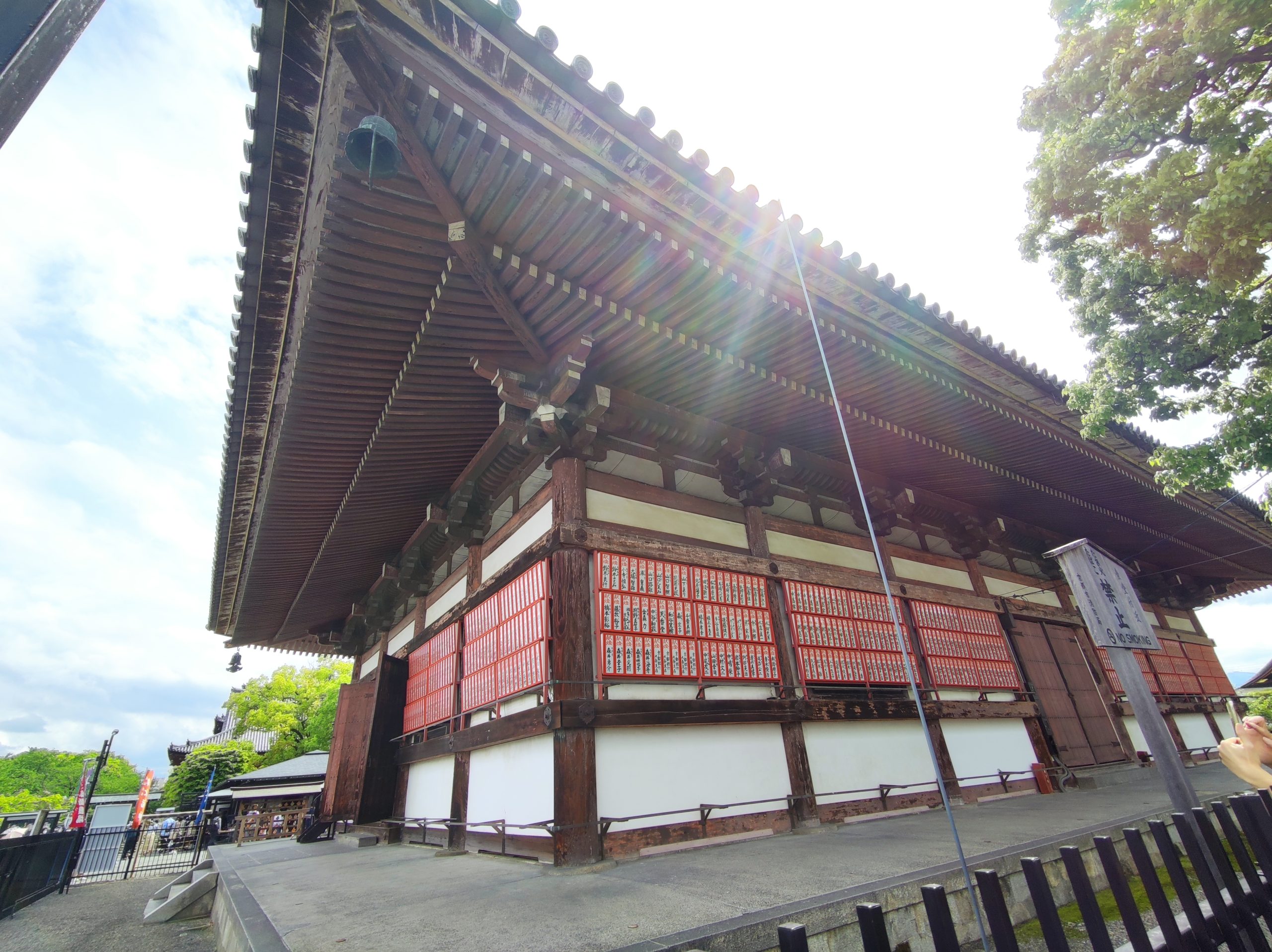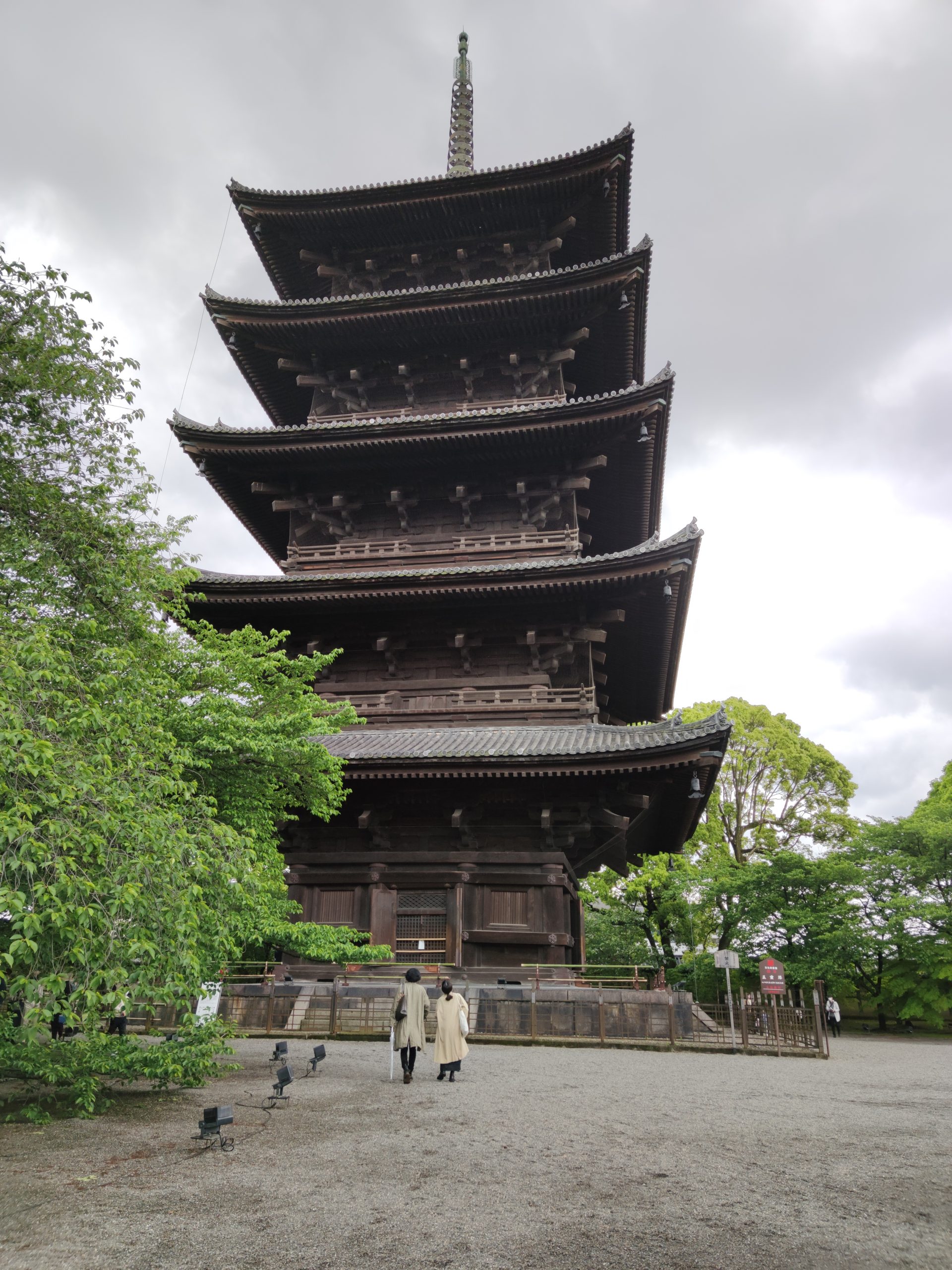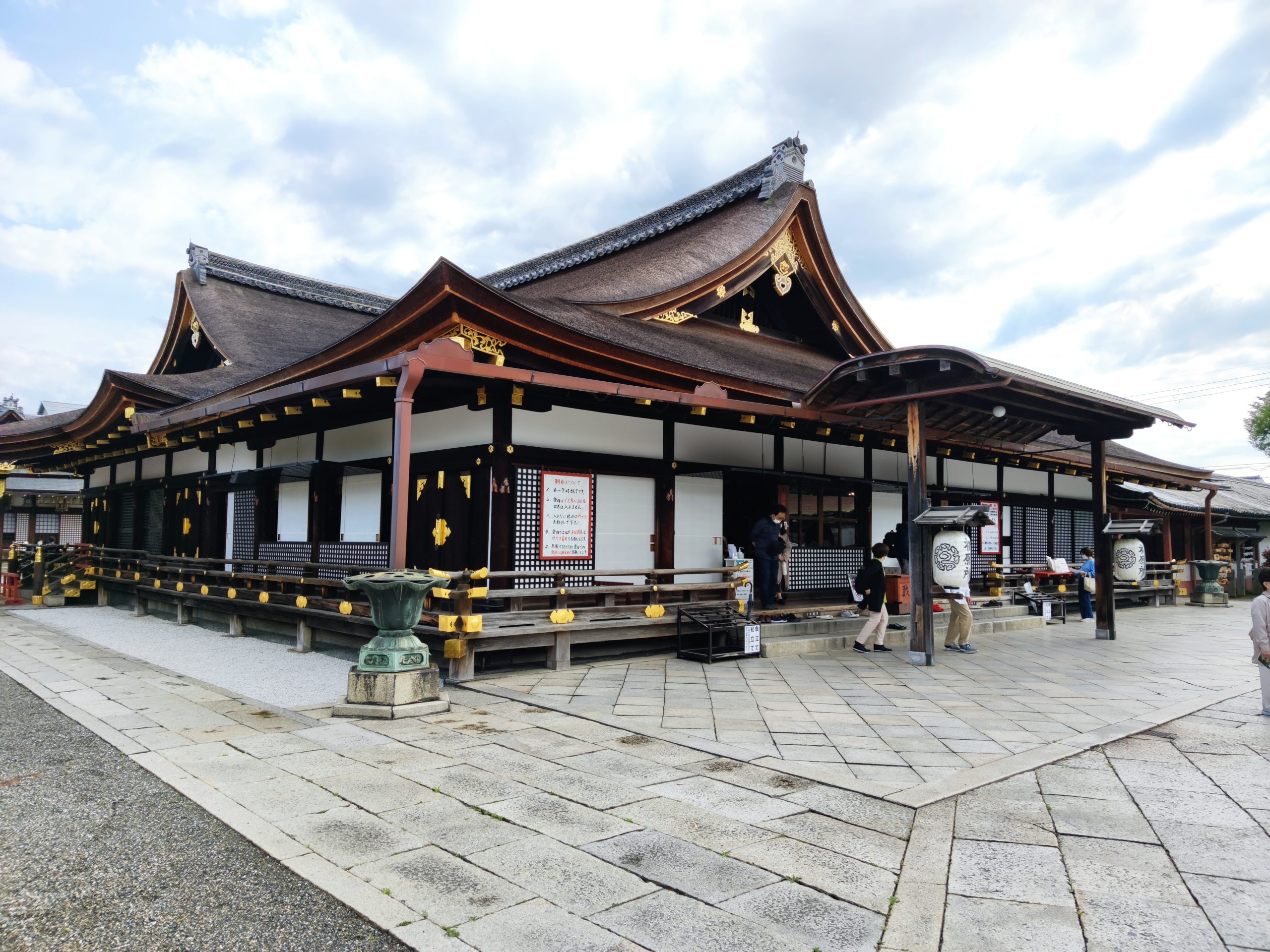When the capital moved from Nara to Heian-kyo, the only temples built by Emperor Kanmu were Toji and Saiji. They were built symmetrically across the Rashomon Gate. Later, Saiji and Rashomon were burnt down. And only Toji remained. The division of Toji Temple the only one that retains the division of the temple when Heian-kyo started. Emperor Saga, who succeeded Emperor Kanmu, invited Kukai to the Kukaitemple, and Toji Temple became a temple of Shingon Buddhism.
Toji Temple has 25 national treasures and 52 important cultural properties. The large Buddhist statues lined up in the Kondo and Kodo halls are a must-see.

Unfortunately, it is not possible to take pictures except of the exterior of the buildings. The Kondo (main hall) is a National Treasure, the five-story pagoda is a National Treasure, the lecture hall is an Important Cultural Property, and the Mikagedo is a National Treasure. There is a fee to see the Kondo, the lecture hall, and the five-story pagoda.
You can see the interior of the five-story pagoda only during special openings. Please note that the Treasure Museum is also open only during limited periods.






Model courses to visit Toji Temple
Visit all five-story pagodas in Kyoto.
Related articles:
[…] is one of the sub-temples of Toji Temple. It is just inside the Kita-Soumon gate (an important cultural property) of To-ji Temple. The path […]
[…] the Edo period (1603-1868) with the construction of Nijo Castle. It is now a temple managed by Toji Temple. The following is an excerpt from the Shinsen-en […]
[…] Toji Temple, Ninnaji Temple, and Jinkoin Temple are three temples in Kyoto that are closely associated with Kobo Daishi, and are called “San Kobo. In Kyoto, there is an old custom that if you visit these three temples during the three days of the New Year, called ” Matsunouchi,” you can escape from the bad luck of the year. This custom is called “Sankobo mairi” and it started in the Edo period. […]
[…] the Kondo (Golden Hall) and the lecture hall of Toji Temple, there are impressive arrays of Buddhist statues designated as National Treasures and Important […]
[…] Pagoda in Toji Temple is the fifth reconstruction in 1644. It is the highest wooden structure in Japan. It is a National […]
[…] Toji Temple awaits with its impressive collection of 25 national treasures and 52 important cultural […]